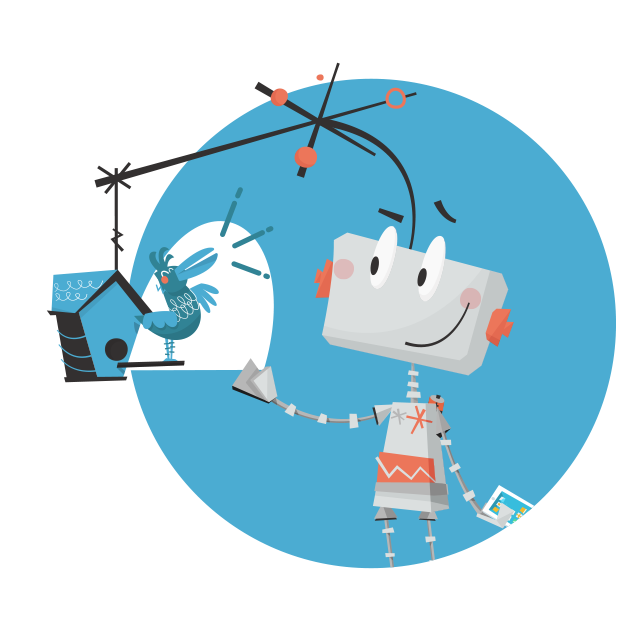Become an insider!
Get our latest payroll and small business articles sent straight to your inbox.
Too many apps.
We hear that a lot.
Too many to choose from, too many that do basically the same thing, too many that don’t do enough, too many that do too much.
These are real pains. It’s fair enough. If you want to review every possible app available to you, you would need a full time job on top of your full time job.
There are hundreds of apps in the Xero Add-on Marketplace and Intuit’s apps.com, let alone the thousands more that exist outside of these two databases.
However, there is one common pain that needs to be addressed:
Why should I pay for an app when I could just as easily complete the task myself, or have a team member do it for me?
 Tom shares more in his #smallbiz_expert Twitter interview with us.
Tom shares more in his #smallbiz_expert Twitter interview with us.
If you think about it, there is a non-automated version of every single SaaS app you have; using older technology and processes. Quickbooks replaced paper ledgers and digital spreadsheets. Paypal replaced cheques and money orders. Tinder (apparently) replaced the need to put in any kind of effort into dating.
Back to the pain of forking out your hard earned dollars for apps – it’s really only painful if you look at apps purely as an expense. Instead, let’s focus on the advantages of mobile application within your business.
The ROI of Apps
The ROI question is critical. The first thing you need to consider is:
Will using this app result in doing things faster or easier than your current process? (All apps serve to replace a part, or all, of a current process.)
If the answer is yes, and the amount of time you save is greater than the cost of the app – it’s a no-brainer.
The other option, when faced with an overwhelming workload, is to simply add additional team members as you bring on new clients or new work. When you hire a full-time employee, you expect them to do one (or more) of the following:
- Earn you more revenue
- Open up your capacity for more work
- Eliminate inefficiencies so that you can work on your business
You should expect your apps to do the exact same thing.
Stop looking at them as a pure expense. Rather, it’s important to start looking at apps as potential billable resources, capacity enablers, and/or cost reducers. Or in other words, full-time employees.
Let’s look at both scenarios.
Apps as Billable Resources
If your team member is performing billable work for a client, and that provides a net benefit to your client, you’d certainly factor that cost into the client’s pricing.
For example, you have an admin team member input transaction data each month so that you can go in, ensure your client’s accounts are reconciled and create the financial statements required.
Your team member’s time is providing a net benefit to your client (taking away the client’s responsibility for inputting transaction data into their accounting system) and, therefore, is billable and generating revenue.
Now instead, think about using an app to automate the data entry in this instance. It’s doing the exact same thing, only much faster.
As such, you are well within your rights to factor in the cost of using this software + a margin based on value into the service provided.
The app is resulting in an even greater net benefit to the client: delivery of financial statements is even faster and potentially more accurate so therefore, the app is a billable resource – it’s value pricing in a nutshell.
Apps as Capacity Enablers/Cost Reducers
Not all apps are created to directly earn you more revenue, Practice Ignition is an example of this. PI focuses on eliminating inefficiencies in a back office process that costs practices thousands of dollars a year (eg., client onboarding, invoicing and payment collection.)
Typically, advisors would rely on Microsoft Word to create a proposal. They would send it by email or fax, have the client print or scan it to sign, set-up the client in their accounting system, set-up invoices and then either chase the client for receivables or have to set-up a payment system.
PI handles this all in one app and then makes the clients’ job of accepting easier too. In this instance, PI’s intention (and the desired outcome of its users) is to minimize the cost of non-billable work and free up time for billable work – ergo, a full-time employee.
In both scenarios, you are realizing an ROI. When looking to hire on new employees, you are looking for the same outcomes, therefore, it makes sense to look at potential apps in the same light.
Qualifying “Candidates”
If you’re contemplating a new hire, many of the questions you will be asking yourself are the same whether it’s a person or an app:
“Can I grow my business or reduce my costs with this employee/app?”
This question alone will set apart the great apps from the mediocre apps; much like it would set apart the great job candidates from the poor candidates.
“How long is it going to take to train my new employee to the point that they are generating revenue or eliminating costs?”
When asking this question regarding an app, it changes only so slightly:
“How long is it going to take to set up and learn my new app to the point that it is generating revenue or eliminating costs?”
“What additional value can my new employee/new app add to my business?”
“Would they open up an additional set of services that I can offer my clients?”
“Do they enhance my Unique Selling Proposition?”
There are likely several other questions that you can ask yourself, but ultimately the goal is to qualify your candidates for the position. We should also be qualifying apps.
Death by App Overload
Now that we have established the concept of apps as employees, there is one more elephant in the room that needs to be addressed – the perceived problem of running too many apps.
I’ve read several comments in business forums about the overwhelming number of apps that one needs to run a professional service business these days.
I’ve also had several people carefully explain to me that they have a specific budget for their software, and if an app falls outside of that budget then it doesn’t get a start. More often than not, the purchase decision for apps is guided primarily by cost.
Furthermore, I’ve regularly heard that many people are looking for the “silver bullet app”; the one that can handle everything you need in one place. This search stems from the concern that they may be paying for more than one app that has similar capabilities. Unfortunately, the silver bullet doesn’t exist – otherwise, it would have taken over the world by now!
Within reason, it’s perfectly fine to run a large stack of apps. As we say in Australia, it’s all about horses for courses. To take it a step further, it is very much in your favour to automate as much as you possibly can, especially early on in the firms that are looking to scale up quickly.
Going back to problem one, if an app can deliver an ROI, you should make room for it in the budget and forget about the cost.
Let’s take a leaf from the book of Stuart McLeod at Karbon (formerly, Practice IQ). He recently shared his tech stack with the world and the list is seemingly endless, but it is no doubt a lesson in planning for growth. As he so eloquently put it:
“While some of these tools overlap in capability, each one is picked because it does the job it set out to achieve very well.”
At Practice Ignition, our SaaS app costs are over $3,500USD per month. We rely on our stack of apps to enable us to continuously build software, provide support for it, and continue business development and education efforts for thousands of clients around the world, with a team of less than 10.
Without them, I’d conservatively estimate that we would need at least 10 more team members to handle the capacity that our internal apps do.
We let the apps do the heavy lifting while our team focuses on putting effort into the important things, such as conversations like this. 🙂
As such, “employing” a stack of apps for $42K/year as opposed to ten team members for $40-50K++ per year EACH, is always going to be the prudent decision in my mind.
It’s important to note that by no means are we advocating you replace your existing team with apps.
We believe that the people in your business are the best at building relationships and adding immense value to your service offering, as opposed to focusing on non-revenue generating work or repeatable work that could be handled electronically.
So there you have it. Apps as employees might not sound so far-fetched now!
Henceforth, I want you, the reader, to go out to the app marketplaces, identify your pains, ask the right questions, seek the right answers and put all of us app developers through the toughest job interview you can think of!











